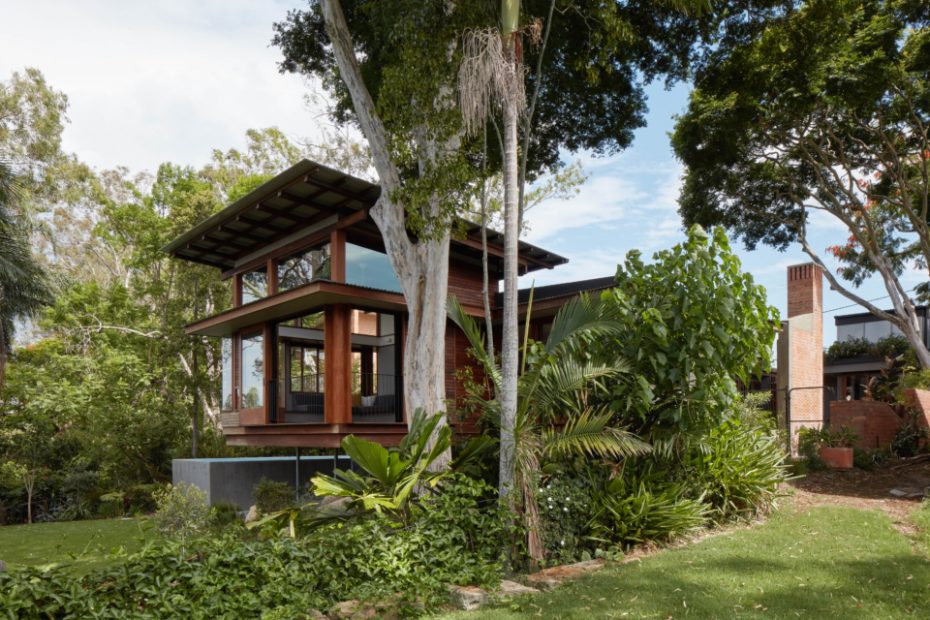A Calming Brisbane Riverfront Home Designed For Work, Rest + Play
Architecture
River Hearth House by Arcke was built after demolishing an existing flood and termite-ravaged home.
A pool overlooks the river at the rear.
The building unfolds with the natural topography, around established existing vegetation.
Walls slide away to create a seamless connection between the house and the surrounds.
This brick fireplace was once inside the living room of the former home, but has been retained in the centre of a connecting courtyard.
Framed views and sightlines have been carefully considered to engage with the river and the shared landscapes beyond.
The kitchen features grey tiles for contrast.
Creating a separate woodwork studio for the artist and owner was central to the brief.
Frosted glass windows offers privacy in the bedroom.
A cosy corner of the living room.
Terrazzo tiles provide discrete pops of colour.
The unassuming facade opens to a courtyard.
This Brisbane house has been built to embrace the natural beauty of its riverfront location.
It’s the home of woodcarver and artist Theresa Darmody and her partner, who purchased the Chelmer block in 2018 and enlisted the help of Arcke to redesign the property.
‘Theresa, one of the owners, required a studio space that could facilitate her creative practice and group woodcarving workshops. The other required a generous office space to work from home,’ Arcke director Matt Kennedy says.
The property had been ravaged by termites and floods, which meant the only option was to demolish and rebuild.
It was also an opportunity to create new spaces for work, rest, and play, all ‘quietly’ coexisting with the site. They made the effort to retain the established trees, and used them to inform the resulting architecture.
River Hearth House now unfolds gradually from the street. An original internal brick fireplace was left in place and meticulously restored to create a focal point or ‘soulful hearth’ of the home in a new courtyard, now seamlessly connecting the living room to Theresa’s woodwork studio. It’s one of the many interstitial zones that allow for congregation and contemplation outdoors.
‘Our clients sought a strong connection to place and a permeability of structures that dissolved the boundaries typically defined by a building,’ Matt says.
Other materials including bricks and tiles were also repurposed from the old structure and stitched into the new design to reduce waste.
It was a time-consuming ‘labour of love’ to carefully catalogue the hardwood timber and salvageable materials, but these decisions helped capture the ‘spirit’ of the former home.
‘The intent is that [the recycled timbers on the exterior] will grey off in time, allowing the building to age gracefully and symbiotically with landscape,’ he adds.
Inside, dark Australian eucalypt timbers have been complemented with warm, grey, and blue-toned tiles and cabinetry. And this simple and calming colour platte allows the views of the lush green surrounds, treetops, and the idyllic river itself to take centre stage.
